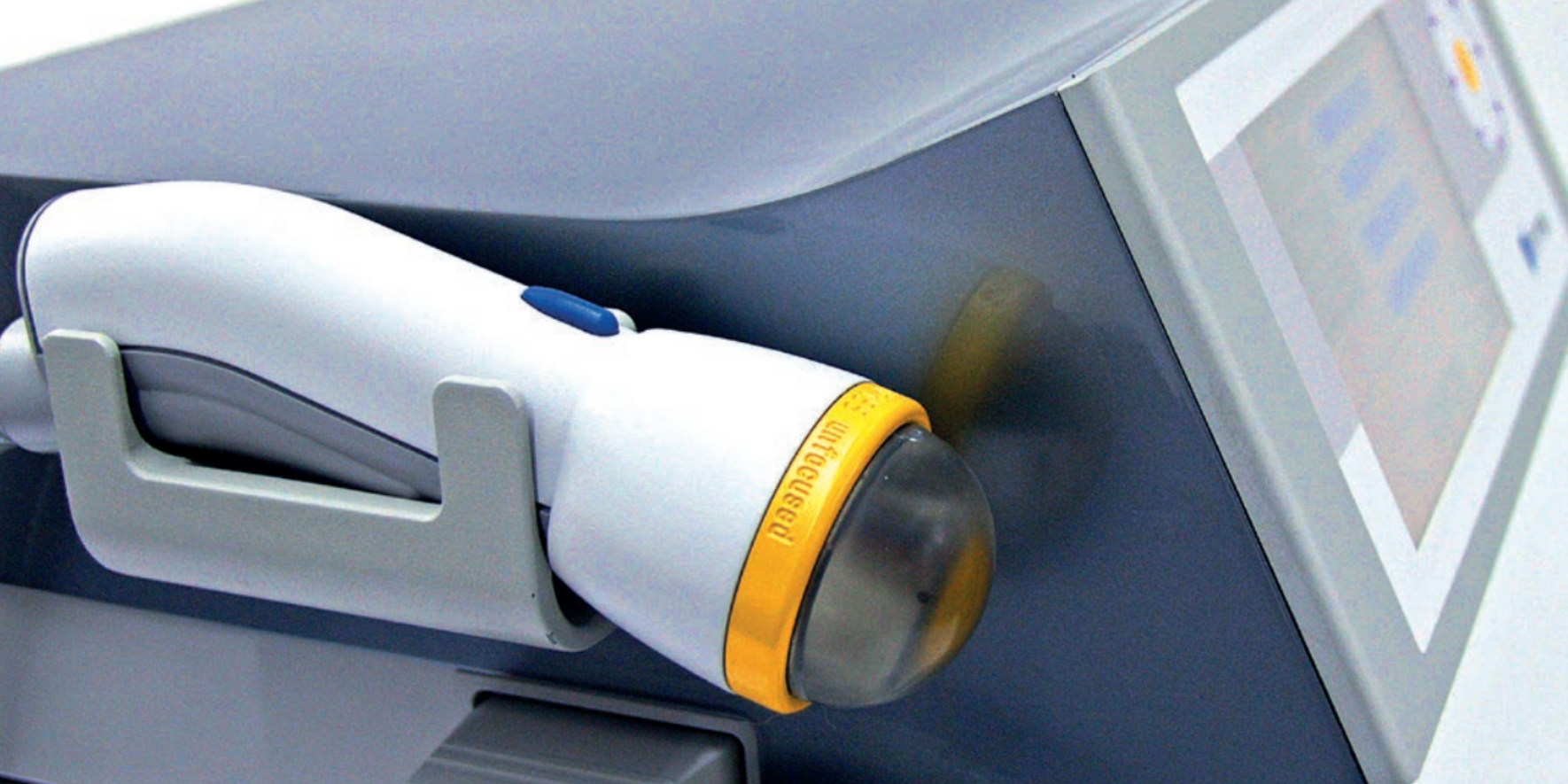
Herman & Wallace Pelvic Rehabilitation Institute would like to express thanks to the following therapists who participated in the development of our new certification, the Pelvic Rehabilitation Provider Certification, or PRPC. There were many stages of development in the rigorous process required to create a certification. Expertise was needed to provide input about examination content, format, and scope. Item writers were needed to create the 450 items needed for our test bank. Teams of reviewers volunteered time to revise items prior to the first exam offering, and raters spent many hours in team web conferences following the exam so that a cut score could be created.
Each of the following therapists contributed in some way to this process, and we are grateful for their time and expertise. (If I have forgotten to list anyone, let me know- we want to give credit where credit is due!) The PRPC is the only certification available that recognizes pelvic rehabilitation providers treating men and women across the lifespan. Congratulations to the first group of PRPC!
Dustienne Miller
Allison Ariail
Peter Philip
Karen Vande Vegte
Elizabeth Hampton
Lila Abbate
Holly Tanner
Nari Clemons
Heather Rader
Deanna Dreier
Joyce Steele
Michelle Lyons
Susannah Haarmann
Christine Cabelka
Brandi Kirk
Sagira Vora
Teri Elliott-Burke
Holly Herman
Pamela Downey
Genne DeHenau-McDonald
Tina Tyndall
Rachel Kilgore
Tina Allen
Kristina VanNiel
Megan Kranenburg
Rachel Brandt
As therapists are increasingly immersed in understanding of mechanisms of chronic pain and central nervous system phenomena, a question persists: what should we do with the peripheral tissues? As is usual in discussions that can take an either/or approach, the answer may lie somewhere in the middle. A recent article discussing myofascial trigger points (TrP) discusses the hypotheses surrounding this phenomena as a peripheral versus central mechanism. In a very well-cited summary of the issue, the authors come to some very helpful conclusions that you may find useful in your clinical practice.
If a trigger point, by definition, is a hyperirritable spot in a taut band of skeletal muscle that may or not have referred pain, what then, is driving the soft tissue dysfunction? Some authors argue that the peripheral nervous system is at fault, while others point to the central nervous system as the driver. Peripherally, nociceptive input may sensitize dorsal horn neurons. Centrally, patients who have chronic pain will have larger areas of pain, described as being a result of higher central neural plasticity. This is a controversial topic, and the authors are quick to point out that experimental evidence is "sparse." While there is support in the literature for peripheral trigger points creating central sensitization, the article states that "…preliminary evidence suggests that central sensitization can also promote TrP activity."
While this study does an excellent job describing various clinical and experimental research, hypotheses, and strength of evidence to support the hypotheses, the summary points are that trigger points may be both a central and peripheral phenomena, and that chronicity of the condition may drive the focus of rehabilitation efforts. Specifically, the authors state that when a patient presents with peripheral sensitization, treatment should be directed towards inactivation of the trigger point, mobilizing joints and nerves, and functional activity. Patients who present with persistent pain may require more attention directed to the central system utilizing a multidisciplinary approach such as medications, medical and physical therapy management, and psychological therapy. Fear, anxiety, and the neuroscience approach to pain should be addressed.
These issues are discussed throughout many the Institute's courses, but if you hope to get an earful about connective tissue and chronic pain research AND add tools to your toolbox, Institute faculty member Ramona Horton offers Myofascial Release for Pelvic Dysfunction. Join Ramona in June in Ohio, the last chance to take the course in 2014!
How the concepts of stigma and taboos affect bowel function is the focus of a recent article by Chelvanayagam, a lecturer in mental health in England. The author establishes that previously taboo subjects are becoming less hidden in the media, such as sexual function or urinary incontinence, but that in the UK, bowel function is still considered taboo. When people are not given language and social permission to discuss health concerns, conditions go underreported or unrecognized and under treated.
The author points out that patients with bowel dysfunction such as irritable bowel disease, fecal incontinence, and stomas feel stigmatized and are hesitant to discuss concerns with heath care providers or loved ones. The social implications of bowel disorders can lead to socially isolating behaviors including difficulty going out to eat, participating in physical activities, or taking sick leave from work.
Because pelvic rehabilitation providers discuss intimate issues including bowel function with patients, communication skills are very important in order to allow the patient to feel comfortable about the topic. Both verbal and non-verbal techniques will be observed and responded to by the patient. Various stigma-reducing strategies are described in the article. At the interpersonal level, cognitive-behavioral and empowerment strategies are recommended, and at the community level, education and advocacy are listed. Each of these strategies are ones that the pelvic rehabilitation provider is capable of providing.
If you have been wanting to learn more about bowel dysfunction and pelvic rehabilitation, the Institute added to our offeringsa bowel course that is next offered in June in Minneapolis, and November in Los Angeles area.
As I looked through this post by an accomplished yoga instructor on the "Top 10 Yoga Postures for Strength," I tried to look at the words and images through the eyes of our typical patients. The chosen postures made the list as they contained foundational "alignment and strength needed to master many more advanced postures." While this may be true for some, I can easily imagine the trouble that most of my patients would find by attempting to cruise through the demonstrated techniques. With jump backs, headstands, handstands, and one arm side planks, there is little caution made about hyper extensibility, about "gripping" postures as Diane Lee explains so well, or about compensatory patterns that can cause strain or injury.
The yoga instructor is not to be blamed- any magazine, blog post, or website that sells fitness or wellness attempts to package information to the public in attractive and efficient methods. An impressively toned, graceful, and high-level yoga practitioner is perfect for such a marketing goal. Unfortunately, any person reading an instructor's guide to finding your physical strength does not have said instructor giving the required feedback about joint position, compensations, and necessary modifications or starting postures.
Patients everywhere espouse the benefits of a yoga practice, and we all have likely met someone whose life was drastically changed for the better after finding yoga. Can yoga also be the cause of an injury? I recall entering a new yoga class at a gym (where the instructor had created a "guru" type following) and I was horrified at the instructor's lack of restraint in guiding a room of 70 or more students through very advanced poses that they were simply expected to push themselves through. The students wore their suffering like a badge, telling each other to "stick it out" as they would keep getting stronger. The instructor then approached me and, without knowing anything about me or my body, twisted me aggressively into a posture that I quickly unraveled as soon as she moved away. As if students cannot find enough ways to push the body outside of a comfort zone, having an instructor violate basic safety principles (was I returning to yoga after a spinal surgery?) adds to the potential for injury.
In a systematic review of adverse events associated with yoga, Cramer, Krucoff & Dobos describe musculoskeletal injuries such as fractures, ligament tears, joint injuries, disc annular tears, and several cases related to breathing techniques. Headstands were a common method for acquiring a yoga-related injury. The authors suggest that for patients who have physical or mental ailments, yoga can be adapted to a patient's "…needs and abilities and performed under the guidance of an experienced and medically trained yoga teacher."
While yoga does not need to be discouraged, we may need to consider the patient's abilities and challenges, and be familiar with our community resources prior to suggesting that a patient begin yoga. If you are more interested in advancing your own practice and in learning how to apply yoga principles and postures to your patient populations, the Institute has several means to accomplish this. For patients who have pelvic pain, Dustienne Miller will teach Yoga for Pelvic Pain in March, where you can learn how to tailor specific yoga techniques for specific patient presentations and conditions. You can also check out Ginger Garner's live and on-line yoga courses by clicking here (scroll down to Yoga as Medicine).

In a recent study examining demographic and obstetric factors on sleep experience of 202 postpartum mothers, researchers report that better sleep quality correlated negatively with increased time spent on household work, and correlated positively with a satisfactory childbirth experience. Let's get right to the take home points: how are we addressing postpartum birth experiences in the clinic, and how can we best educate new mothers in self-care? You will find many posts in the Herman Wallace blog about peripartum issues, and you can access the link here.
The authors recommend that healthcare providers "…should improve current protocols to help women better confront and manage childbirth-related pain, discomfort, and fear." Do you have current resources with which you can discuss these issues (and a referral to an appropriate provider) when needed? In our postpartum
course, we highlight the challenges a new mother faces due to the commonly-experienced fatigue in the postpartum period. According to Kurth et al., exhaustion impairs concentration, increases fear of harming the infant, and can trigger depressive symptoms. Issues of lack of support, not napping, overdoing activities,, worrying about the baby, and evenworrying about knowing you should be sleepingcan worsen fatigue in a new mother. (Runquist et al., 2007)
Back to what we can do for the patient: investigate local resources. This may include knowing what education is happening in local childbirth classes (and providing some training when possible respectfully inquiring of new mothers how they are doing with sleep and demands of running a household (and business or work life and finding out what support/resources the new mother has but is not accessing. Patients are often hesitant to ask for help, or may feel guilty in hiring someone to help clean for the first few months, feeling that she "should" be able to handle the chores and tasks. Educating women about results of the research and about potential improvements in quality of life can help the entire family.
If you are interested in learning more about Care of the Postpartum Patient, sign up today for our next continuing education course taking place next month in the Chicago area. (Don't you have a friend to visit in Chicago?) If you can't attend the Postpartum course, how about the Pregnancy and Postpartum Special Topics course taking place in October in Houston? Check the website as we add more Peripartum course series events, including Care of the Pregnant Patient, for 2015!
In a study conducted in Western Sydney, Australia, researchers aimed to discover the barriers and enablers to attending preoperative pelvic floor muscle training for men scheduled for a radical prostatectomy. Semi-structured interviews were completed with referral sources (urological cancer surgeons, nurses, and general practitioners pelvic rehabilitation providers (physical therapists and continence nurses and male patients having surgery at a public and a private hospital.
Key factors that encouraged men to attend pelvic muscle training included having a referral from a provider that was for a specific therapist or center. Barriers to attending rehabilitation included potential cost of private pelvic floor muscle training, and lack of awareness about pelvic muscle rehab among both providers and patients. The providers were often not aware of public sector providers of pelvic muscle training, and patients were unaware of potential benefits of rehabilitation.
While the numbers of referrers (11 providers (14 and patients (13) do not represent a large population, the recorded and transcribed interview allowed the subjects to express themselves without constraint. Some of the providers described the challenge of patients getting lost between the general practitioner and the specialists, the physiotherapists stated that formal training for male pelvic rehab was lacking and that providers were in the habit of referring for women, rather than men, and that the physiotherapist had not made an attempt to market services for male rehabilitation.
Physicians also noted that they refer to pelvic floor rehabilitation because the current and emerging literature is so positive regarding preoperative pelvic muscle training. The patients who were given a specific referral (especially when convenient regarding location and making an appointment) were more likely to schedule rehabilitation.
From this research, we can ask some questions of our current practices. Is a therapist at your facility trained to treat male urinary incontinence? Are the providers and the community aware of your pelvic rehabilitation program? Are the providers aware of the research promoting preoperative physiotherapy for urinary incontinence post-prostatectomy? If you are interested in knowing more about this patient population, the Male Pelvic Floor Function, Dysfunction, and Treatment course takes place at the end of the month in California. In the course we discuss prostatectomies and post-operative recovery, male pelvic pain, and male sexual health.

In the world of pelvic rehabilitation, brain morphology has been a hot topic for several years. Research has identified changes in various brain structures in patients who have specific conditions: irritable bowel syndrome, chronic pelvic pain, among others. (See prior blog about the brain, pain, and pelvic rehab by clicking here.) The research related to meditation is deep and rich, and the medical system continues to acknowledge the potential health benefits and cost savings from this simple technique that requires no equipment. The National Center for Complementary and Alternative Medicine (a division of the National Institutes of Health) states that meditation may work through effects on the autonomic nervous system. The nervous system in turn regulates functions such as breathing, heart rate, and digestion.
I had the opportunity in 2006 to take a course titled Mindfulness-Based Strategies for Relaxation and Stress Management from Carolyn McManus. In addition to discussing an abundance of research from a variety of disciplines, Carolyn taught us practical strategies and clinical approaches for patient care. She also instructed us in mindfulness techniques so that we increased our own skill set. Carolyn has instructed similar strategies to health care providers from many disciplines and to her patients, many of whom have tried years of other types of therapy. Since that time, I have constantly recommended the CD's that Carolyn created for patients, and with the many approaches she has (including contract-relax and autogenic retraining) I have found that there is something for everyone. The Institute is honored to host Carolyn's continuing education course, Mindfulness-Based Biopsychosocial Approach to the Treatment of Chronic Pain this November in Seattle. Keep in mind that the course is open to many disciplines- would this be a great course to take your student to, or to invite a referral source to attend with you? Undoubtedly, this course will offer beneficial information not just for the patients, but also for the participants to use in their own daily self-care.
In addition to Carolyn's new offerings, we are thrilled to host a course that is taught by siblings who represent the fields of physical therapy and psychiatry. How wonderful it will be to hear from Nari Clemons, PT, and Shawn Sidhu, MD, expert clinicians who treat patients from their own perspectives, and to be able to receive information from these different view points. You can sign up for the Meditation and Pain Neuroscience continuing education course taking place in Illinois in September. You can also read about Nari and Shawn's new course in Nari's recent blog post.
Now, back to the title of this post. Researchers studied MR images of 25 male patients while they were practicing a type of meditation termed loving-kindness. 10 of the men were deemed experts with practice in the technique for more than 5 years. Compared to the novices, the right angular and posterior parahippocampal gyri had increased gray matter in the experts. The authors note that the regions identified as being larger are related to affective regulation associated with empathy, anxiety, and mood. Bottom line? We are still learning a lot about meditation and the potential implications towards health, and there is continual attention given to understanding how the changes are created in the body. If you want to learn practical and evidence-based information about mindfulness and meditation, please join us at our new courses! And if you want some increased gray matter in some seemingly really valuable parts of the brain, practice a lot!
In a recently published study, an anti-inflammatory diet (AID) for inflammatory bowel disease (IBD) was offered to 40 patients as an adjunctive regimen. Retrospective medical chart review was utilized to assess dietary adherence and outcomes. Of the 40 patients who were offered the program, 13 patients did not attempt the diet. Of the remaining 27 patients who did attempt the AID, 24 of them had a good or very good response, 3 of them had a "mixed" response. After following the diet, all patients were able to discontinue 1 or more IBD medications, and all patients reported decreased symptoms such as improved bowel frequency. Interestingly, of the 3 patients who had an ambivalent or negative response to the AID, 2 of them were diagnosed with C-difficile, a very challenging condition to resolve.
Inflammatory bowel disease can include the diagnoses of Chrohn's disease and ulcerative colitis, and each are characterized by periods of relapse. Patients are often reliant upon medications such as corticosteroids or immunomodulators during flare-ups, and surgical interventions including colectomy. As medical theories have evolved, the authors of this study point out that the gut microbiome is believed to play an importnant role in IBD, and therefore treatments directed at improving intestinal microbiome have increased.
The IBD anti-inflammatory diet (AID) includes lean meats, poultry, fish, omega-3 eggs, particular carbohydrates, specified fruits and vegetables, flours from nuts and legumes, a few limited cheeses, cultured yogurt, kefir, miso and other foods rich in certain probiotics, and honey. Bananas, oats, blended chicory root, and flax meal are also included. Additional suggestions are given based on the acuity of patient symptoms such as pureeing food or avoiding food with seeds. The diet is detailed into "phases" that progress from Phase I+ to Phase IV, to be followed when the patient is in remission and without dietary restrictions.
As this study is a case series, the authors are hesitant to extrapolate findings beyond stating that "some of our patients with inflammatory bowel disease can benefit.." from an anti-inflammatory diet, with respect to decreased symptoms and a resultant decrease in medication usage. In the study, patients were primarily seen by a nutritionist. As the mechanism for the improvement noted with an AID is still theorized but not known, the article describes different proposed mechanisms for improved symptoms, such as changes in the gut flora, or gut mucosal healing due to decreased irritants.
As pelvic rehabilitation providers, we have a responsibility, not to counsel our patients in detailed nutritional regiments aimed at curing disease, but in educating our patients about the potential benefits of nutritional counseling and attention to diet. Many patients are not offered nutritional counseling, or need support in order to initiate or maintain dietary changes. We can play an important role in guiding our patients to help and in supporting them in their efforts to make lasting changes. If you find that you are working with more patients who have bowel dysfunction, and wish to increase your knowledge beyond the PF2A course, you still have time to register for the Bowel Pathology and Function course, taking place in June in Minneapolis, which addresses many factors specific to bowel health and pelvic rehabilitation approaches.
xPop Quiz
- Can a pelvic rehabilitation provider help a male patient who has erectile dysfunction (ED)?
- Is there research to support a claim that rehab helps with ED?
- Are there any medical conditions a pelvic rehab provider should suspect when a patient complains of ED?
- Are there any screening tests a pelvic rehab provider can complete to rule out medical causes of ED?
- Are there any pelvic rehabilitation courses that discuss ED in men?
If you answered "yes" to all of the above questions, well done. A pelvic rehabilitation provider can indeed help a patient who presents with complaints of erectile dysfunction, and the highest level of evidence (randomized, controlled clinical trial) has been completed to support this claim. Medically, a patient with ED may be suffering from heart disease, diabetes, metabolic syndrome, or even multiple sclerosis and should be screened by a medical provider prior to working with a pelvic rehabilitation provider. Skilled listening, and screening tests such as blood pressure, balance, and medication screening can be utilized in the clinic to alert the therapist to a medical issue.
As many of our readers are members of the APTA Section on Women's Health, you may have seen a recent email inviting interest in a men's health subgroup. Hooray! As we know intimately, both men and women are underserved in the world of pelvic rehab. In our training programs, it was rare to learn about the specific pelvic floor muscles, let alone the male versus female sexual health dysfunctions. If you are interested in learning more about the clinical reasoning process, the anatomy, and the research behind erectile dysfunction, join Holly Tanner and Stacey Futterman in California at the end of the month in Torrance!
Male Pelvic Floor Function, Dysfunction, & Treatment not only covers male sexual health, but covers in depth the topics of urinary incontinence and male chronic pelvic pain. As many therapists are already working with patients following prostate cancer surgery, these topics are very applicable in current practice. The course is only a couple weeks away, and it's in sunny California near the ocean. The men in your care will thank you!
As rehabilitation providers move towards primary care for musculoskeletal dysfunction, the privileges bring responsibilities. Regardless of our level of training and degree attainment, screening for underlying medical conditions is at the forefront of our work at all times. During the postpartum period, it is understandable that a new mother may report fatigue, aches and pains, as she tends first to the needs of her newborn. Many pelvic rehabilitation providers love working with new mothers because we have such a powerful opportunity to serve, support, educate, and nurture our patients.
One important health risk to keep in mind in the postpartum period is blood clots, or thrombosis. Changes in a woman's physiology during the peripartum period alter her risk factors for experiencing blood clots, a topic that is discussed in our pregnancy and postpartum courses. A deep vein thrombosis, or DVT, often occurs in the calf area, but the upper extremity can also develop clots. While local injury can result from a DVT, a major risk of a DVT is the progression to a pulmonary embolism, when a blood clot travels through the blood stream to the lungs- this is a life threatening condition. An article in the New England Journal of Medicine reports that the most significant risk period is within the 6 weeks postpartum. Let's get to the heart of this issue: how do we screen for a DVT or pulmonary embolism?
According to the Mayo clinic, in about 50% of cases of DVT, symptoms are not noticeable. When they are, they include:
Symptoms
- Swelling in the affected limb
- Pain in the leg, like a charley horse
- Warmth over affected area
- Changes in skin color (blue, pale, or red)
Warning signs of a pulmonary embolism:
- Sudden shortness of breath
- Chest discomfort that increases with deep inspiration
- Faintness, lightheadedness, dizziness
- Rapid heart rate
- Sweating
- Coughing up blood
- Anxiety or nervousness
If a patient is screened for the above, and you suspect a DVT, what should you do? If the first thought that comes to mind is the clinical test known as "Homans's Sign," unfortunately, that is not a current response. The best thing to do is to contact an appropriate provider (perhaps the referring provider, primary care provider, emergency room provider, etc) and report on the findings of Wells criteria. Providers can base further diagnostic testing upon this clinical prediction rule for DVT screening. To read an article about application of Wells criteria in the clinical setting, click here. If you google "Wells criteria" you will also find many reliable sites that calculate the test for you.
If you are already working with women in peripartum periods, please join us in our Peripartum Course Series! The next opportunity to take Care of the Pregnant Patient is April in Illinois and Care of the Postpartum Patient happens at the end of this month in California!










































